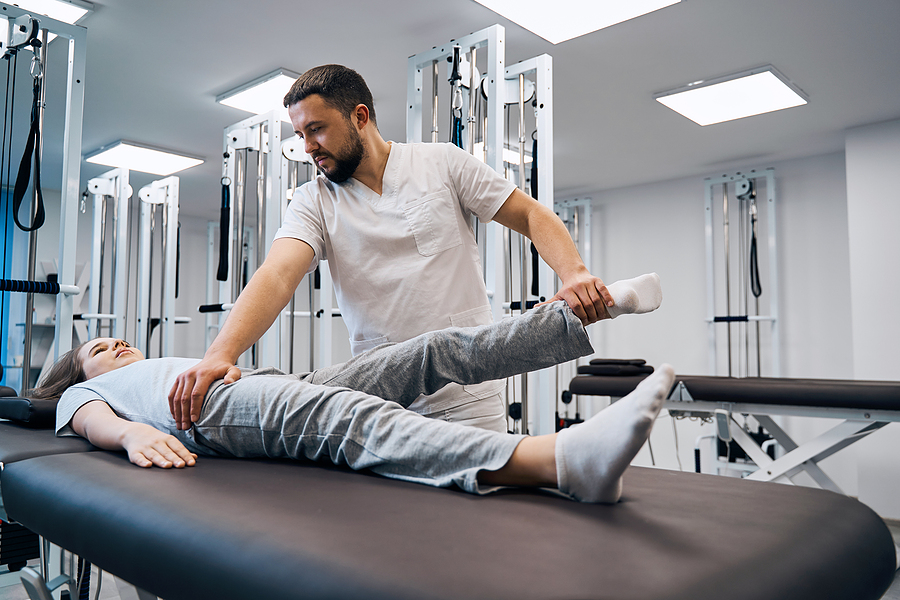Every year, over 3.5 million children up to the age of 14 are injured while playing sports with friends or a team. Football, bicycling, basketball, and baseball/softball are the sports tied to the largest number of injuries seen in ERs across the nation.
Injury prevention is important at any age, but a child’s body is still growing and developing. An injury could lead to damage that lasts a lifetime. Take steps to prevent sports injuries before, during, and after games and practices.
A Child’s Musculoskeletal Structure Puts Them at Risk
Children still have growing bones and muscles. Growth plates don’t close until a girl is around 13 to 15. A boy’s growth plates don’t close until he’s 15 to 17. This puts them at higher risk for injury.
Growth plates are a section of cartilage found at the end of long bones, such as the femur. The soft nature allows them to keep growing until a child completes puberty and reaches adulthood. Because they’re softer, they’re more prone to fractures.
When a child fractures a growth plate, there are five levels of severity.
- Type I separates the bone from the shaft and disrupts growth.
- Type II breaks through part of the growth plate and cracks the bone shaft.
- Type II is more common in older children and breaks through the growth plate, breaking off a piece of bone.
- Type IV breaks through the growth plate, the bone shaft, and the end of the bone.
- Type V is severe, yet rare, and is a compression fracture that crushes the growth plate.
The severity of growth plate injuries determines whether rest, a cast or splint, or surgery is necessary. If the damage is severe, it can stop bone growth, leading to uneven bone lengths.
Strategies to Prevent Injuries
Teach your child these strategies that help prevent sports injuries.
1. Complete Warm-Ups and Cool-Downs
Warm-ups before a game or practice are essential. They help warm up the muscles and get the blood flowing. Your child needs to complete them. That means arriving on time for all practices and pre-game warm-ups.
After a game or practice, cool-downs help slow the heart rate and allow blood flow to the muscles to ease. Abrupt changes are more likely to cause injuries.
2. Make Healthy Food Choices
The body needs fuel to perform at its peak. This means a healthy diet with protein, fiber, antioxidants, and calcium. Processed, sugar-filled foods aren’t ideal dietary options.
Sometimes, families save time by hitting a fast-food restaurant before a game or practice, but it’s food that provides little in terms of nutrients that the body needs to avoid injury.
3. Stay Hydrated
Your child needs to stay hydrated during a game or practice. Bring extra water bottles, milk, or natural fruit juices. In extremely hot weather or intense games, water with added electrolytes can help restore sodium and other essential minerals that are lost through sweating.
4. Learn the Proper Techniques
Your child needs to learn the proper techniques for spinning quickly, throwing a ball, or jumping over something. The wrong motions can cause damage.
These are things a coach should teach, but in cases where a coach is a parent volunteer, the right techniques may not be something the coach knows. Ask a sports and orthopedics doctor for guidance if you can’t find another expert to help your child.
5. Use Equipment Correctly
Your child needs equipment that fits properly. A batting helmet shouldn’t flop around when your child is batting. Shin guards shouldn’t fall off.
Once you have equipment and protective gear that fits correctly, make sure your child knows why it’s important and how to use it properly. If you’re not sure how to use something needed for a specific sport, ask a coach to help explain it to both you and your child.
Tips for Parents to Actively Keep Their Child Healthy
What are some of the best ways to keep your child safe while playing sports in school or community programs?
1. Aim for a Balance of Activities
If your child loves sports, try to get them to play as many sports as possible. That puts the focus on different muscle groups. This can help avoid injuries by keeping all muscle groups limber.
For example, there’s more twisting and spinning in figure skating than in track. A baseball pitcher uses the shoulder joint more than a kicker in football.
2. Encourage Your Child to Talk to You
A girl is more likely to tell her parents or guardian about a head injury. Parents need to make sure that their sons and daughters address any possible injuries as quickly as possible.
Hold open and honest talks about your child’s feelings after games and practices. Your child needs to be honest if sudden twinges or snapping sensations happen when running, jumping, or twisting. Your child needs to know they can come to you and don’t need to try to walk it off.
Sometimes a sport seems appealing, but it’s not as much fun once the season starts. If your child isn’t enjoying the sport, you want your child to feel that they can tell you without creating disappointment. If they want to stop, don’t force them to continue. If your child isn’t enjoying the sport, less attention is paid to playing properly.
3. Talk to the Coaches
Sometimes, coaches are so focused on winning that they forget the kids are there to have fun. As anxiety and worry set in, kids are more prone to injuries or giving up. Don’t let that happen. Talk to coaches about your concerns. If that’s not good enough, talk to the league or school authorities.
I watched a coach push a middle schooler to get back on the court after falling and twisting an ankle. The swelling and bruising were clear indicators that the kid needed to stop and rest. Parents assumed the coach knew best. Remember that most coaches are parent volunteers and not orthopedic experts.
4. Pay Attention to Your Child During and After Practices and Games
As much as you want to, there are times when an injury will occur. The hope is that equipment and proper techniques reduce the risk of severe injury.
Watch your child during practices and games. If you notice any signs of discomfort, pain, or concern, it’s okay to pull a child aside and ensure there’s no injury. You don’t want to stop your child from playing, but injuries cannot be ignored. If your child is hurt and continues to play, it could lead to serious damage to tendons, ligaments, muscles, or bones.
Head injuries are especially concerning. If your child is hit in the head by a ball, bat, etc., or collides with another player and takes a blow to the head, don’t ignore it. Sometimes, head injuries worsen and can be especially dangerous. Have a child see a doctor after any head injury.
5. Schedule an Appointment With a Sports and Orthopedics Specialist
If your child is playing a sport, it’s worth going to a sports and orthopedics specialist to ensure your child is healthy and ready for practices and games. This is especially true if there have been past injuries.
Learning proper form and ensuring muscles aren’t being overworked is important. It’s key to keeping your child injury-free, no matter what sport is of interest. Premium Sports and Orthopedics has appointments throughout the week, and online scheduling makes it easy to pick the best time for your family’s schedule.







